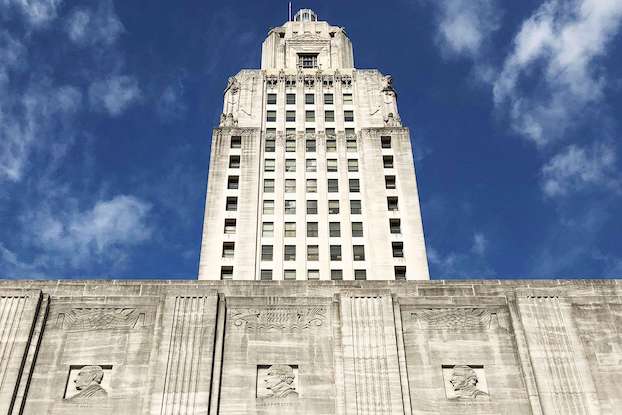Informer: City needs more money to finish Lake Street
Published 12:15 pm Sunday, March 31, 2013
Lake Street was to be four-laned all the way to Country Club Road from the Sale Street intersection, and it has stopped at West McNeese. It is my understanding that it has been deferred for review of the bid process. This was part of the bond issue that was passed several years ago. When will this be completed?
“Under the $90 million bond issue that the voters approved in 2006, $6,000,000 was dedicated to widening and providing other improvements (drainage, water, sewer, etc.) to Lake Street from the Contraband Bayou Bridge south to Country Club Road. The bid for this entire project came in at $11.6 million,” City Administrator John Cardone wrote in an email.
“Phase I of this project from Contraband Bayou Bridge south to McNeese Street was rebid and cost approximately $7,700,000. Additional funding is needed to complete the section of Lake Street from McNeese Street to Country Club Road.”
Online: www.cityoflakecharles.com.
Law prohibits signs on public property
Is it legal for candidates for office to place signs on your property without your permission?
State law prohibits candidates from posting campaign signs on public property, in public rights of way and on utility polls — thereby confining the display of such signs to private property.
But no state statute expressly bars campaigns from posting signs without permission, though courtesy and respect for property rights dictate they should.
The Informer last wrote about campaign signs in 2007, when it quoted historian Adrian Goldsworthy’s book “Caesar: Life of a Colossus” in noting that such signs, and limitations on their placement, predate modern times.
“Less subtle propaganda took the form of signs painted on buildings expressing support,” Goldsworthy writes.
“Many of the tombs that stood along the sides of the main roads into Rome included in their inscription a prohibition against such marks of support being posted or painted on them.”
A golden age?
A LiveScience.com story posted in January reported that researchers have determined that ancient Roman candidates — specifically those in Pompeii — likely asked for permission before putting their names on other people’s walls.
The story says researchers examined more than 1,000 campaign messages, spanning 300 years, painted on walls in three regions of Pompeii, which was buried by rock and ash when Mount Vesuvius erupted in A.D. 79.
They found that most of the political ads were placed on private residences on the most used streets.
“The current view is that any candidate could have chosen any location and have their ad painted on the wall. After looking at the contexts, this would not seem very likely,” University of Helsinki archaeologist Eeva-Maria Viitanen told the website.
“The facades of the private houses and even the streetwalks in front of them were controlled and maintained by the owner of the house, and in that respect, the idea that the wall space could be appropriated by anyone who wanted to do it seems unlikely.”
But the story notes that the study results are preliminary and haven’t undergone peer review yet.
Online: www.livescience.com/26164-pompeii-wall-graffiti-social-networks.html.
The Informer answers questions from readers each Sunday, Monday and Wednesday. It is researched and written by Andrew Perzo, an American Press staff writer. To ask a question, call 494-4098, press 5 and leave voice mail, or email informer@americanpress.com
(American Press Archives)





